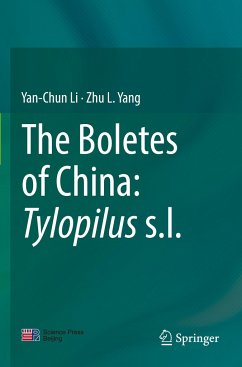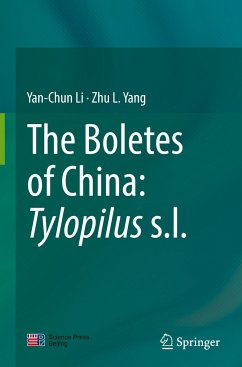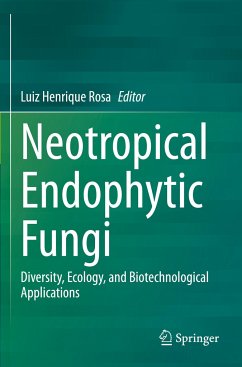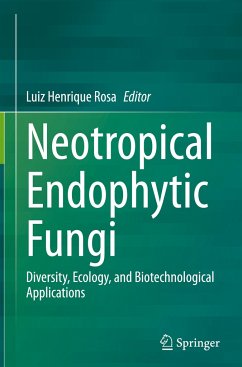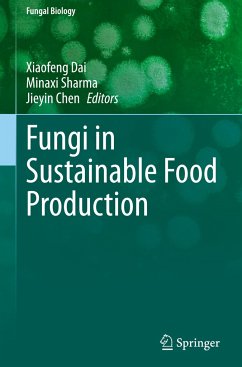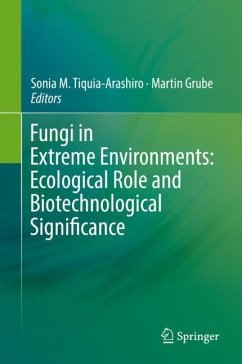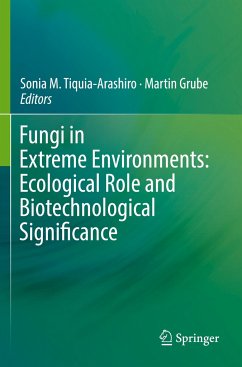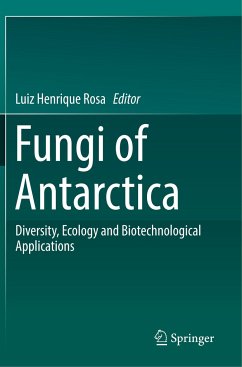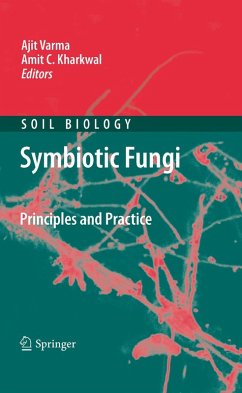
Atlas of Chinese Macrofungal Resources
Volume 1: Overview, Macrofungal Ascomycetes, Jelly Fungi and Coral Fungi
Versandkostenfrei!
Versandfertig in 1-2 Wochen
119,99 €
inkl. MwSt.
Weitere Ausgaben:

PAYBACK Punkte
60 °P sammeln!
This book is part of the 4-volumes collection of Atlas of Chinese Macrofungal Resources. This atlas documented 1819 species (or varieties) in 509 genera of macrofungi known from China, which are, according to their morphological characteristics, practically divided into 10 groups, including 196 larger ascomycetes, 21 jelly fungi, 47 coral fungi, 637 polyporoid, hydnaceous and lephoroid fungi, 11 cantharelloid fungi, 653 agarics, 130 boletes, 75 gasteroid fungi, 16 larger pathogenic fungi on crops, and 33 larger myxomycetes.All species are evidenced with vouchers and photographs. About 370 of t...
This book is part of the 4-volumes collection of Atlas of Chinese Macrofungal Resources. This atlas documented 1819 species (or varieties) in 509 genera of macrofungi known from China, which are, according to their morphological characteristics, practically divided into 10 groups, including 196 larger ascomycetes, 21 jelly fungi, 47 coral fungi, 637 polyporoid, hydnaceous and lephoroid fungi, 11 cantharelloid fungi, 653 agarics, 130 boletes, 75 gasteroid fungi, 16 larger pathogenic fungi on crops, and 33 larger myxomycetes.
All species are evidenced with vouchers and photographs. About 370 of the listed species (occupying 1/5 of the total species) have their type localities in China, among which over 260 species (accounting for 1/7 of the species) were firstly discovered and published by the present authors. Some of the species are endemic to China and East Asia. Descriptions of all species are accompanied with color photographs showing their macro-morphology and (or) habitat. The macroscopic and microscopic diagnostic characters, ecological habits, economic importance (edibility, medicinal availability or toxicity) and geographical distribution in China of all species are described in brief and easy-to-understand style. In the guide, the characteristics and using method of the book, related mycological vocabulary, common taxonomic techniques and positions of the fungal genera in modern taxonomic system are briefly introduced.
The knowledge of this book should be interesting to mycologists, mycology fans and mushroom lovers, as well as researchers, teachers and students studying on edible fungi, plant pathology, healthcare and biomedicine sciences, bioresources and biodiversity, ecology and other related disciplines. It is an ideal reference for those who are interested in the Chinese macrofungi and larger slime molds.
In this first volume, it covers Macrofungal Ascomycetes, Jelly Fungi and Coral Fungi.
All species are evidenced with vouchers and photographs. About 370 of the listed species (occupying 1/5 of the total species) have their type localities in China, among which over 260 species (accounting for 1/7 of the species) were firstly discovered and published by the present authors. Some of the species are endemic to China and East Asia. Descriptions of all species are accompanied with color photographs showing their macro-morphology and (or) habitat. The macroscopic and microscopic diagnostic characters, ecological habits, economic importance (edibility, medicinal availability or toxicity) and geographical distribution in China of all species are described in brief and easy-to-understand style. In the guide, the characteristics and using method of the book, related mycological vocabulary, common taxonomic techniques and positions of the fungal genera in modern taxonomic system are briefly introduced.
The knowledge of this book should be interesting to mycologists, mycology fans and mushroom lovers, as well as researchers, teachers and students studying on edible fungi, plant pathology, healthcare and biomedicine sciences, bioresources and biodiversity, ecology and other related disciplines. It is an ideal reference for those who are interested in the Chinese macrofungi and larger slime molds.
In this first volume, it covers Macrofungal Ascomycetes, Jelly Fungi and Coral Fungi.



